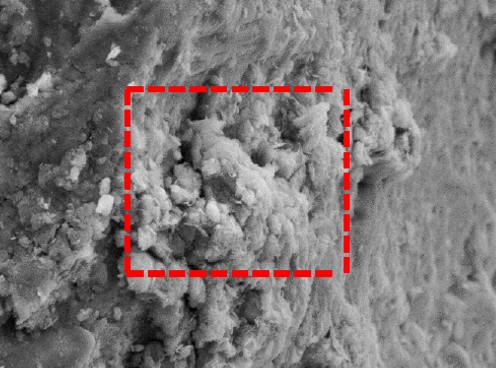Characterization of Polycyclic Aromatic Hydrocarbons and Bioaugmentation Potential of Locally Isolated Beneficial Microorganisms Consortium for Treatment of Tar-Balls 10.32526/ennrj/19/2020225
Main Article Content
Abstract
Oil spills are one of the environmental pollutions that commonly occur along coastal areas. Tar-balls are one of the products that come from the oil spill pollution. In this study, tar-ball pollution was monitored at 10 points along the coastline of Marintaman Beach in Sipitang, Sabah, Malaysia. This research determined the physical characteristics, composition, and concentration of Polycyclic Aromatic Hydrocarbons (PAHs) in tar-balls. The total number of tar-balls collected was 227 (n=227). The tar-balls were observed in various shapes and the sizes were recorded in the range of 0.1 cm to 6.9 cm. The composition and concentration of Polycyclic Aromatic Hydrocarbons (PAHs) in the outer and inner layer of tar-balls were determined. The results showed that the main Polycyclic Aromatic Hydrocarbons (PAHs) compounds were found in inner layers of the tar-balls with benzo (g,h,i) perylene (72.26 mg/kg), flourene (59.87 mg/kg), dibenzo (a,h) anthracene (44.48 mg/kg), indeno (1,2,3-c,d) pyrene (78.18 mg/kg), and benzo (e) fluoranthene (45.70 mg/kg), respectively. Further research was done with the bioaugmentation study of locally isolated beneficial microorganisms (LIBeM) consortium for treatment of tar-balls in an Aerated Static Pile (ASP) bioreactor system. The results showed that, after 84 days of treatment, this consortium, consisting of C. tropicalis-RETL-Cr1, C. violaceum-MAB-Cr1, and P. aeruginosa-BAS-Cr1, was able to degrade total petroleum hydrocarbon (TPH) by 84% as compared to natural attenuation (19%). The microbial population of this consortium during the biodegradation study is also discussed in this paper.
Article Details
Published articles are under the copyright of the Environment and Natural Resources Journal effective when the article is accepted for publication thus granting Environment and Natural Resources Journal all rights for the work so that both parties may be protected from the consequences of unauthorized use. Partially or totally publication of an article elsewhere is possible only after the consent from the editors.
References
Abdel-Shafy HI, Mansour MS. A review on polycyclic aromatic hydrocarbons: Source, environmental impact, effect on human health and remediation. Egyptian Journal of Petroleum 2016;25(1):107-23.
Adeniji AO, Okoh OO, Okoh AI. Analytical methods for the determination of the distribution of total petroleum hydrocarbons in the water and sediment of aquatic systems: A review. Journal of Chemistry 2017:1-13.
Adzigbli L, Yuewen D. Assessing the impact of oil spills on marine organisms. Journal of Oceanography and Marine Research 2018;6(1):2-7.
Ana M, Marija L, Hideyuku I, Vladimir B, Ivan K, Ksenija S, et al. Efficient biodegradation of petroleum n-alkanes and polycyclic aromatic hydrocarbons by polyextremophilic Pseudomonas aeruginosa san ai with multidegradative capacity. Journal Royal Society of Chemistry 2020;10(24):14060-70.
Chandru K. Temporal Distribution of Tar-Balls Stranded on The Beaches of Terengganu [dissertation]. Universiti Malaysia Terengganu, Malaysia; 2005.
Chandru K, Zakaria MP, Anita S, Shahbazi A, Sakari M, Bahry PS. Characterization of alkanes, hopanes and polycyclic aromatic hydrocarbons (PAH) in tar-balls collected from the East Coast of Peninsular Malaysia. Marine Pollution Bulletin 2008;56:950-62.
Dashtbozorg M, Riyahi B, Shushizadeh MR, Taghavi L. Quantitative evaluation of n-alkanes, PAHs, and petroleum biomarker accumulation in beach-stranded tar balls and coastal surface sediments in the Bushehr Province, Persian Gulf (Iran). Marine Pollution Bulletin 2019;146:801-5.
Frank AK, Phi R, Renija G, Jobin J, Shikha S, Mian H, et al. Upstream development of escherichia coli process with PhoA promoter using design of experiments (DoE). Journal of Industrial Microbiology and Biotechnology 2020;47:789-99.
Gabriela AL, Mariana J, Rafaella C, Marili VN, Lara DS. Polycylic aromatic hydrocarbons degradation by marine-derived basidiomycetes: Optimization of the degradation process. Brazilian Journal of Microbiology 2018;49:749-56.
Jennifer EB, Hayley H, Yong Y, Robert JL, Derek CG, Muir. Sources and environmental fate of pyrogenic polycyclic romatic hydrocarbons (PAHs) in the Arctic. Emerging Contaminants 2019;5:128-42.
Johnson KCC. The Tar-balls Pollution along the Coast of Kuala Terengganu [dissertation]. Universiti Malaysia Terengganu, Malaysia; 2004.
Leili M, Abbas R, Edris B, Hamid D, Abu HS, George ZK. Petroleum hydrocarbon removal from wastewater: A review. Processes 2020;8(4):447.
Lijmbach GWM. On The Origin of Petroleum. London, UK: Applied Science Publishers; 1975.
Nasser A, Al-Ghouti MA, Samir J, Nabil Z. Potential for native hydrocarbon-degrading bacteria to remediatehighly weathered oil-polluted soils in Qatar through self-purificationand bioaugmentation in biopiles. Biotechnology Reports 2020;28:e00543.
Nurulhuda Z, Piakong MT. Pertumbuhan Candida tropicalis RETL-Cr1 Dalam Medium Mengandungi Minyak Mentah. Proceedings of the 3rd Postgraduates Seminar; 2007 Oct 8-10; Palace Hotel, Kota Kinabalu: Malaysia; 2007.
Piakong MT. The Performance of Phenol Biodegradation by Candida tropicalis RETL-Cr1 Using Batch and Fed-batch Fermentation Techniques [dissertation]. Universiti Teknologi Malaysia, Johor Malaysia; 2006.
Piakong MT, Nur Zaida Z. Effectiveness of single and microbial consortium of locally isolated beneficial microorganisms (LIBeM) in bioaugmentation of oil sludge contaminated soil at different concentration levels: A laboratory scale. Journal of Bioremediation and Biodegradation 2018;9:2.
Ruben F, Ivan L, Carlos S, Diego B, Jose LRG, Ana IP. Bioaugmentation treatment of a PAH-polluted soil in a slurry bioreactor. Applied Science 2020;10:2837.
Sakshi, Haritash AK. A comprehensive review of metabolic and genomic aspects of PAH-degradation. Archives of Microbiology 2020;202:2033-58.
Yong JC. Chemical Composition of Distribution of Tar-balls along Terengganu Beach [dissertation]. Universiti Malaysia Terengganu, Malaysia; 2003.
Zakaria M, Takada H, Tsutsumi S, Ohno K, Yamada J, Kouno E. Distribution of polycyclic aromatic hydrocarbons (PAHs) in rivers and estuaries in Malaysia: A widespread input of petrogenic PAHs. Environmental Science and Technology 2002;39(9)1907-18.

